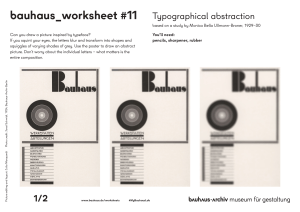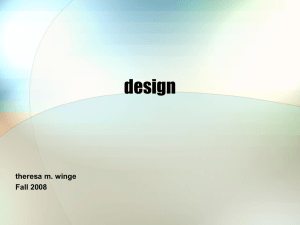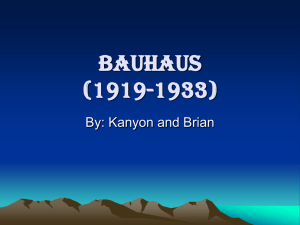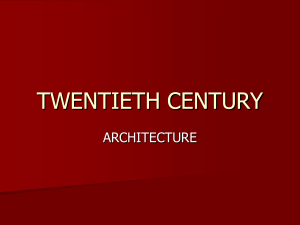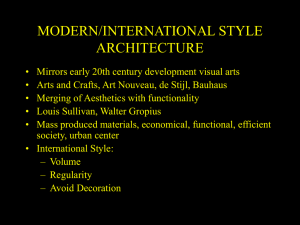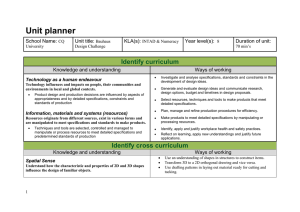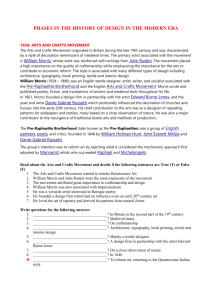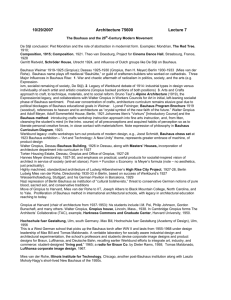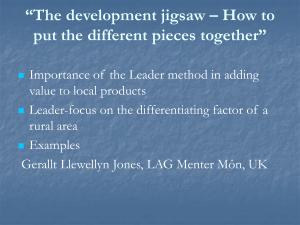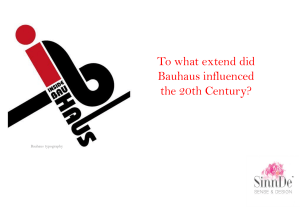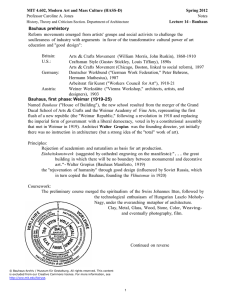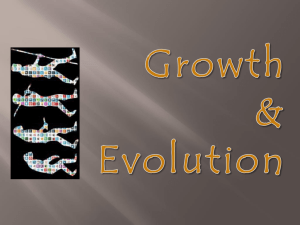Q1: How does sculptor Ron Mueck represent his view of the world?
advertisement
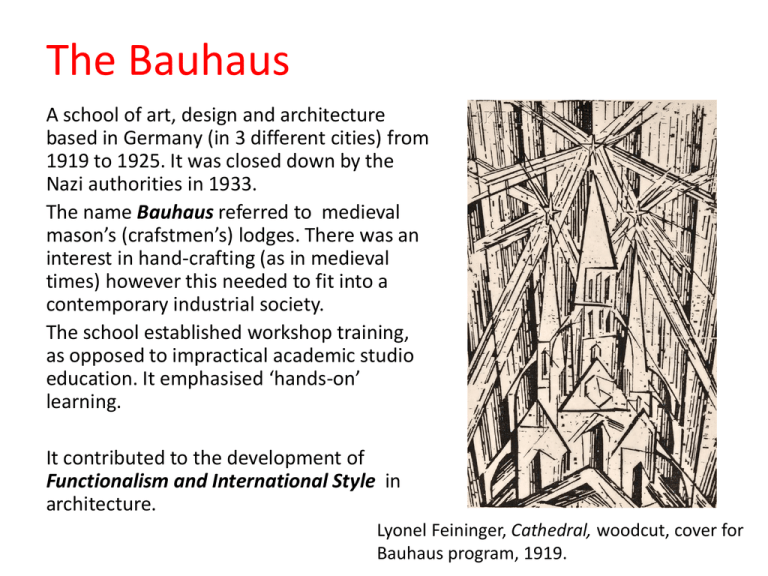
The Bauhaus A school of art, design and architecture based in Germany (in 3 different cities) from 1919 to 1925. It was closed down by the Nazi authorities in 1933. The name Bauhaus referred to medieval mason’s (crafstmen’s) lodges. There was an interest in hand-crafting (as in medieval times) however this needed to fit into a contemporary industrial society. The school established workshop training, as opposed to impractical academic studio education. It emphasised ‘hands-on’ learning. It contributed to the development of Functionalism and International Style in architecture. Lyonel Feininger, Cathedral, woodcut, cover for Bauhaus program, 1919. During the video… • Look for materials used; • Consider what is said about typography; • Look at the designs you see – how are they different from what we have seen up till now? • Consider our Conceptual Framework: what is said about relationship of artists to artwork; audiences; the world? Interesting resource on all things Bauhaus: http://designhistory.org/Bauhaus3.html MoMa site on recent Bauhaus Exhibition: http://www.moma.org/interactives/exhibitions/2009/bauhaus/Main.html#/Timeline Examining the Exam… Q1: How does sculptor Ron Mueck represent his view of the world? Plate 1: Ron Mueck, b. 1958, Australia. Boy, 1999. Mixed media including fibreglass and resin, 490 cm × 490 cm × 240 cm. Photographed on exhibition at the Venice Biennale, 2001. Plate 2: Ron Mueck, b. 1958, Australia. Two women, 2005. Mixed media including fibreglass and resin, 85 x 47 x 38cm. Q2. With reference to Plate 1 and the source material, explore some ways the artist uses the Postmodern Frame. I work with plants and other living or organic materials such as hand-made paper, sand etc. I try to bring nature closer to city-dwellers both with my street art pieces and with my site-specific indoor installations – Tokodi. Edina Tokodi, b. 1979 Hungary, lives and works Brooklyn New York, Moss Stencil in Dumbo, 2008, street art, wall stencil using living moss. http://www.drawingontheland.com/?p=1038
